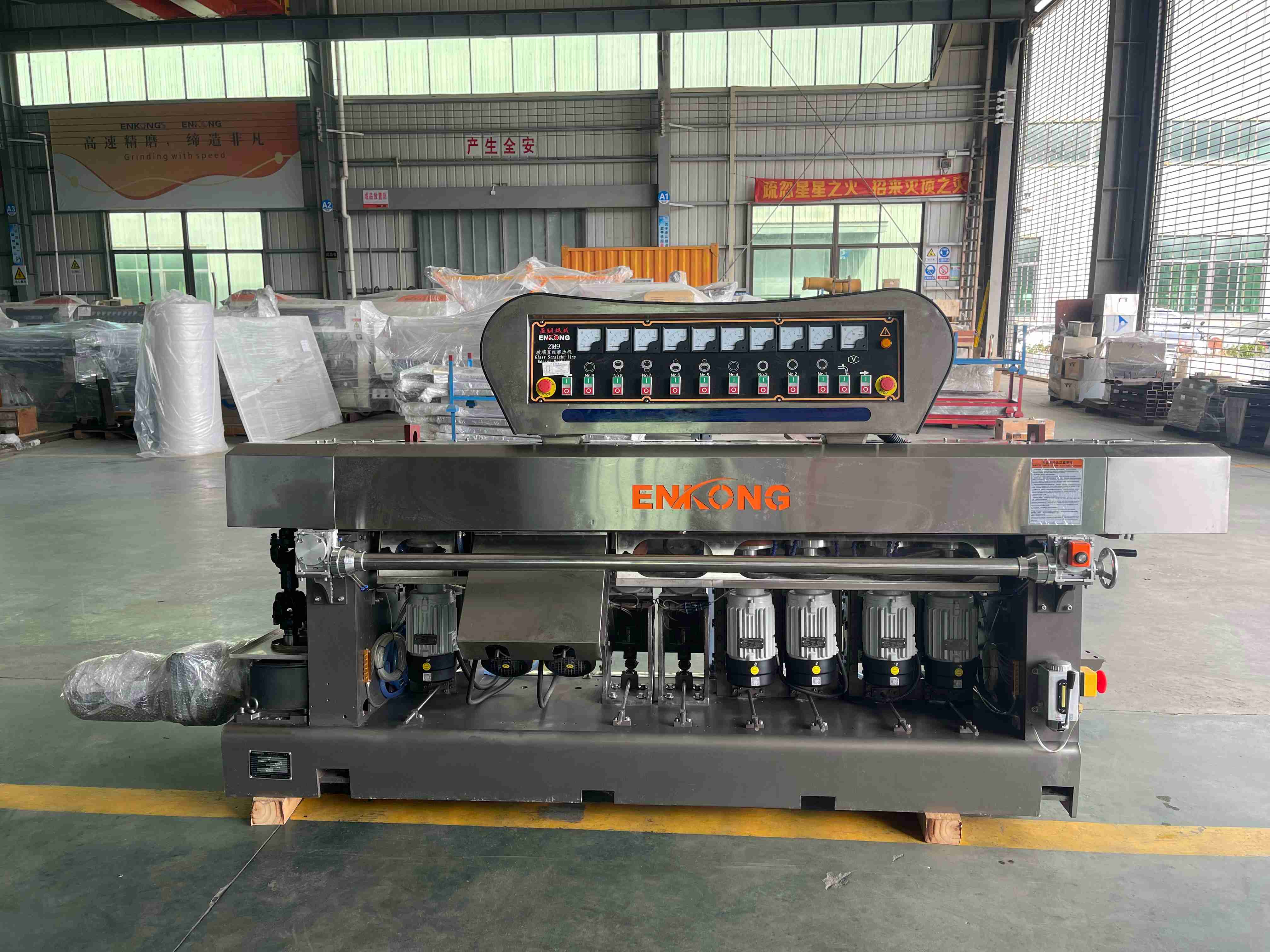Glass edging machines: The masterminds behind beveled edges, curves, and decorative profiles
In the realm of glass fabrication, precision and aesthetics are paramount. The process of shaping glass into intricate designs and structures is a delicate balance between craftsmanship and technology. Glass edging machines, the unsung heroes of this endeavor, play a pivotal role in creating beveled edges, curved lines, and other decorative profiles that elevate the aesthetic appeal of glass products. This article delves into the intricacies of glass edging machines, their capabilities, and how they contribute to the art of glasswork.

I. Introduction
Glass has been a staple in architecture, design, and daily life for centuries. Its versatility has led to its application in various fields, from windows and doors to decorative features and functional components. The art of glassworking involves cutting, shaping, polishing, and edging the glass to achieve the desired aesthetic and functional outcomes. Among these processes, glass edging is crucial for enhancing the durability, safety, and visual appeal of glass products.

Glass edging machines have revolutionized this aspect of glass fabrication by automating the process and achieving precision beyond what manual methods could offer. In this article, we explore the capabilities of these glass grinding machines in creating beveled edges, curves, and other decorative profiles.
II. The role of glass grinding machines
Glass grinding machines are specialized tools designed to process the edges of glass sheets to a desired thickness, shape, and finish. They are an essential part of the glass manufacturing process as they ensure that the edges are smooth, uniform, and free from defects that could compromise the strength or appearance of the glass.
The primary functions of glass edging machines include:
* Removing sharp edges from cut glass sheets to prevent injury and improve safety.
* Reducing the thickness of the glass edge to enhance durability and reduce breakage risk.
* Creating decorative profiles such as beveled edges, curves, and other geometric shapes to enhance the aesthetic appeal of glass products.
* Polishing the edges to a smooth finish that enhances the overall look and feel of the glass.
III. Beveled edges: The classic choice for sophistication
Beveled edges are a classic choice in glass fabrication for their ability to add a touch of sophistication to any design. Beveling involves cutting a slanted angle on the edge of the glass to create a smooth transition between the edge and the main surface of the glass. Glass edging machines can be equipped with beveling heads that can create various bevel angles ranging from 1mm to 10mm or more. These glass grinding machines can also achieve precise bevel lengths to ensure that each edge is consistent in both angle and length.
The use of beveled edges is not limited to architectural applications but also extends to decorative features such as tabletops, shelves, and other furniture pieces. Beveled edges can create a sense of depth and elegance that enhances the overall aesthetic appeal of these items. Additionally, they provide an extra layer of protection by creating a smooth surface that is less likely to chip or break compared to unedged or unbeveled glass.
IV. Curved edges: Embracing the organic in design
Curved edges add a touch of organic beauty to any design by mimicking the natural curvature of materials such as stone or wood. Glass edging machines with curved processing capabilities can create curved edges that are as smooth as those found in nature while maintaining precision and consistency. These glass grinding machines use special heads or rollers that conform to the desired curvature, ensuring that each edge is perfectly shaped without any imperfections or unevenness.
Curved edges are popular in architectural applications such as curved windows and doors, as well as in decorative pieces like curved mirrors or vases. They create a sense of movement and fluidity in designs that can significantly enhance the visual impact of a space. Additionally, curved edges provide a unique way to incorporate organic shapes into modern designs while maintaining the durability and functionality of glass products.
V. Decorative profiles: Embracing creativity in form and function
Beyond beveled and curved edges, glass edging machines can create a wide range of decorative profiles that add a touch of individuality to any design. These include but are not limited to ogee (a curved profile with a pronounced arch), bullnose (a rounded edge with a flat top), and mitered (a stepped profile with sharp angles). Each profile offers unique visual characteristics that can complement different design aesthetics and functional requirements.
Decorative profiles are particularly popular in decorative features such as shower enclosures, shelving units, backsplashes, and even wall art pieces. Glass grinding machines provide an opportunity for designers to express their creativity while ensuring that each piece is both functional and visually appealing. The use of decorative profiles also allows for customization, allowing designers to create unique pieces that stand out from the rest.

